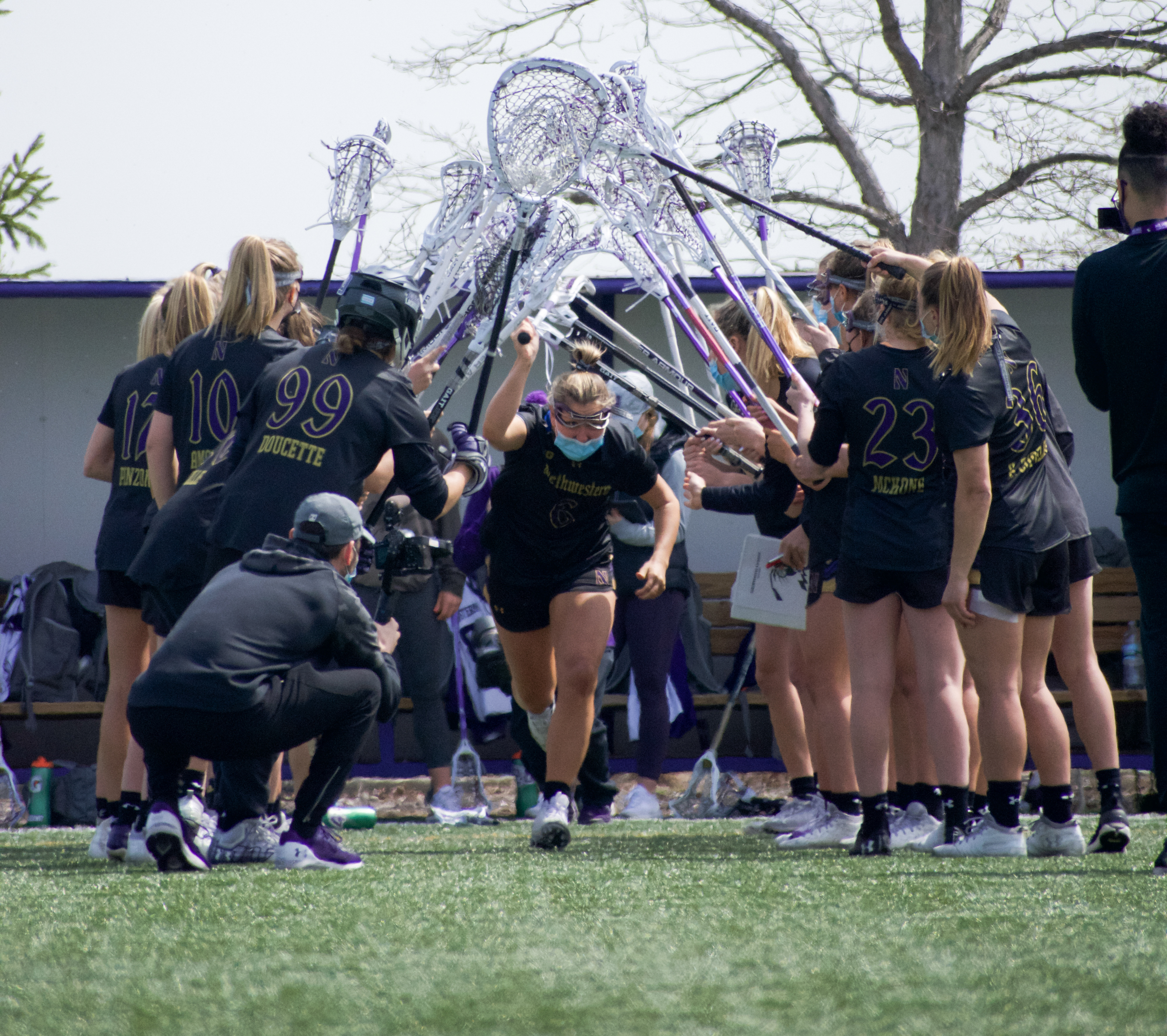
Northwestern has become somewhat of a sports school over the past few years. Whether it’s the football team becoming a perennial participant in the Big Ten Championship or the women’s basketball squad dominating opponents left and right, recent years have been good for the Wildcats as they became a team to always watch in the NCAA. Before the recent success, however, there was a team that was consistently dominant: women’s lacrosse.
Between 2005 and 2012, Northwestern won seven of the eight NCAA Women’s Lax championships, with only a final loss in 2010 keeping them from winning eight straight titles. Led by head coach Kelly Amonte Hiller, the Wildcats established a period of dominance almost unseen in college sports today, which is well-known as one of the greatest eras in Northwestern sports history. Despite this, the team has not been able to return to the championship since 2012 and hadn’t even won the regular season Big Ten title since 2013.
That is, until this year. With an undefeated regular season, the ’Cats (11-0 B1G) were declared regular season champs and are looking to return the dominant status they once held over the Big Ten and NCAA and bring a national championship back to the lakeside for the first time in nine years. But who is to point to for this success? Does Northwestern really look that dominant? And how will the ’Cats perform in the Big Ten Tournament and beyond?
Let’s plant ourselves in the crease and find out.
All-out attack:
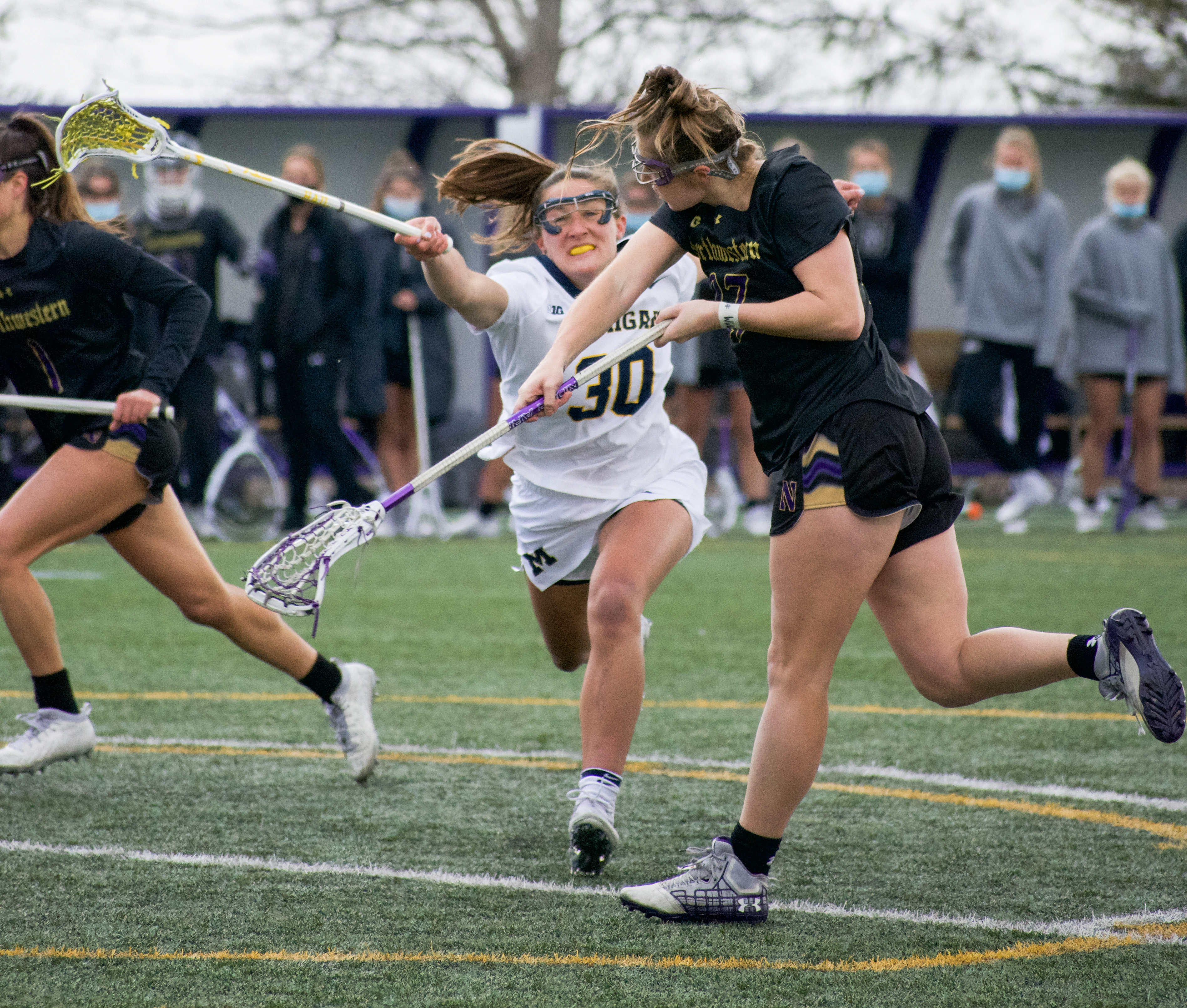
By now you’re probably wondering: “How good is Northwestern women’s lacrosse actually?” Well let’s put it this way. Northwestern has won 11 games but has allowed a whopping total of 113 goals — nearly 10 goals per game. Frightening, until you hear the other statistic: in response, Northwestern has scored more than double that total, with 227 total goals. This team is built on a philosophy of “don’t stop scoring until the final buzzer sounds,” and it’s worked so far, with the team leading the NCAA in points per game (29.82), scoring margin (10.36) and shots on goal per game (30.36).
Leading this attack — in the most literal sense possible — is junior attacker Izzy Scane. Scane has had one of the most storied seasons in the history of the sport, leading the NCAA in goals scored this season (70) and in goals scored per game (6.36). For context, Courtney Murphy of Stony Brook set the NCAA all-time record for goals in a single season in 2016, when she scored 100 goals in 21 games — 10 more games played than Scane this season. Jill Altshuler of Lehigh set the record for goals per game in 1996 with 5.71 — Scane would technically take the top spot over Altshuler with her impressive 6.36 goals per game. Despite a shortened season, Scane’s record-shattering performance cannot be ignored.
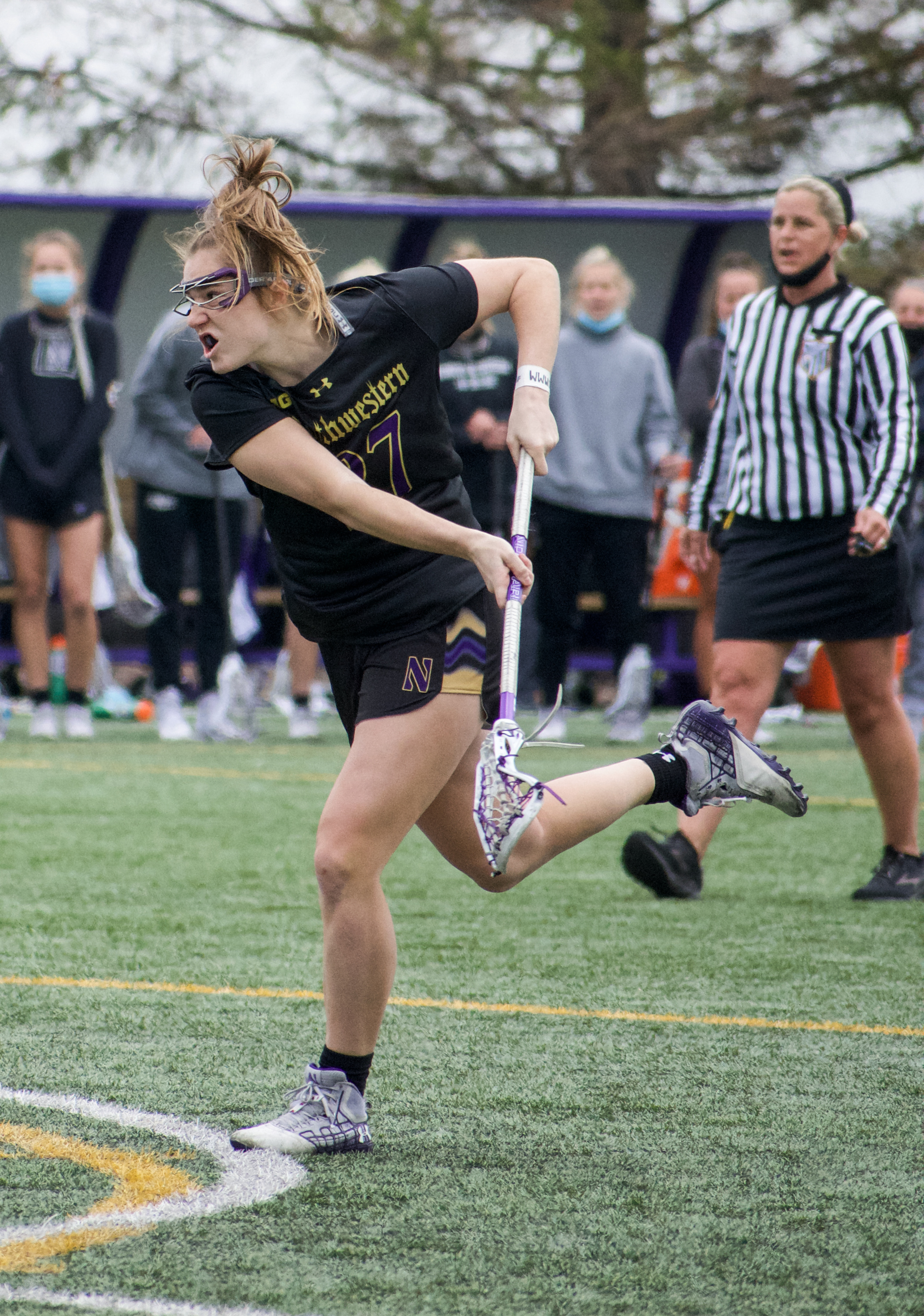
Scane’s performance is built on one of the most dangerous shots ever seen. Placing herself in front of the net, the attacker will often pick up a loose ball or assist and let an absolute laser off in close, providing no time for the opposing goaltender to react or find the save. The shot has allowed Scane to set records this season, including a single-game program record of 10 goals from a March 19 game against Rutgers.
"HISTORY for Izzy Scane" 😱
— Northwestern Athletics (@NU_Sports) March 19, 2021
1️⃣0️⃣ goals on the day sets a new program record!#GoCats | @NULax pic.twitter.com/iO9nYhlmUM
The Robin to Scane’s Batman is senior attacker Lauren Gilbert, one of the best “free position” shooters in the league. A free position in lacrosse occurs after a foul by the opposition and allows the offense to set up a play, find the prime shooting position and often score a goal. Gilbert is the undisputed champion of free position for the ’Cats, scoring 1.64 goals from free position per game — good for fourth in the NCAA. Gilbert’s not too bad in regular formation as well, scoring 4.55 goals per game- second in the Big Ten behind Scane.
13 goals over a pair of games. 😳
— Northwestern On BTN (@NUOnBTN) March 16, 2021
That was enough to earn Lauren Gilbert @B1GLacrosse's Offensive Player of the Week! @NULax pic.twitter.com/KwcZsFNXf7
Of course, you can’t have goals without someone setting them up. For Northwestern, that’s sophomore attacker Erin Coykendall, who has 26 assists on the year and 2.36 per game — both putting her in first in the Big Ten for those respective categories. While Scane and Gilbert often position themselves in front of the net, Coykendall serves an important foil, setting herself up on the side to help keep plays flowing and provide an outlet for tough passes. Of course, that isn’t to say she can’t score as well.
Erin Coykendall, are you kidding me?! 😱
— Northwestern On BTN (@NUOnBTN) March 29, 2021
🚫👀 @NULax pic.twitter.com/JSV2aT76rV
Led by this trio, the Northwestern attackers have become one of the most feared squads in both the Big Ten and NCAA. The team, however, is not built on the attack alone, as there are 10 players on each team, and the attackers cannot leave the offensive zone. So where does this group get set up?
Grit and grind:
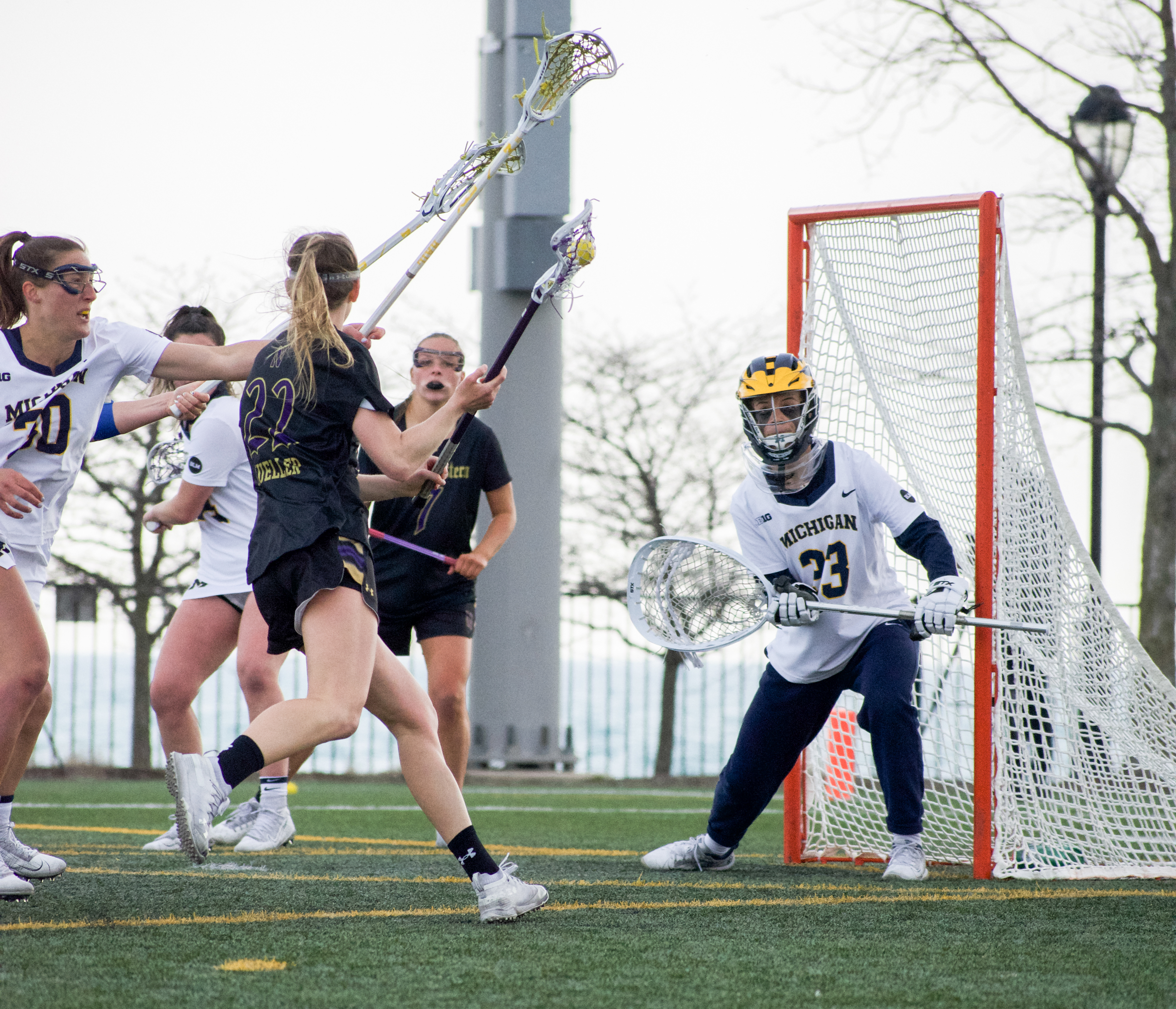
Arguably one of the toughest positions, midfielders must possess speed to set up plays and get back on defense and grit to win ground balls. They have to work through the neutral zone and possess an almost two-sided ability to provide both a scoring option and defensive prowess. While a very tough position to play, Northwestern has a fantastic core of midfielders who are key to this team’s success.
It all starts with one of the most important plays: the faceoff, or as it’s statistically noted, the “draw.” In a faceoff, a midfielder from each team enters the circle, lines up their stick with the opposition, and the ball is placed between the sticks. When the referee says so, the two throw the ball in the air and try to gain control of the ball, pushing and shoving, boxing each other out to win it for their team and set up control in the offensive zone. It’s a rough and tumble play that can define a game for a team, as a good faceoff percentage leads to more offensive chances, and a faceoff occurs after every single goal.
Northwestern knows this well — they hold the highest number of draws controlled per game in the NCAA this year with 19.36, and they win 59.5% of their faceoffs (12th in NCAA). Leading the charge in this category is senior midfielder Brennan Dwyer, who leads the Big Ten in 6.09 draws controlled per game and 67 overall. In critical situations, Wildcat fans can look for Dwyer to enter the circle to set up the offensive scheme. If Dwyer’s on the bench, however, senior Jill Girardi will often take her place, as she's won 38 draws this season.
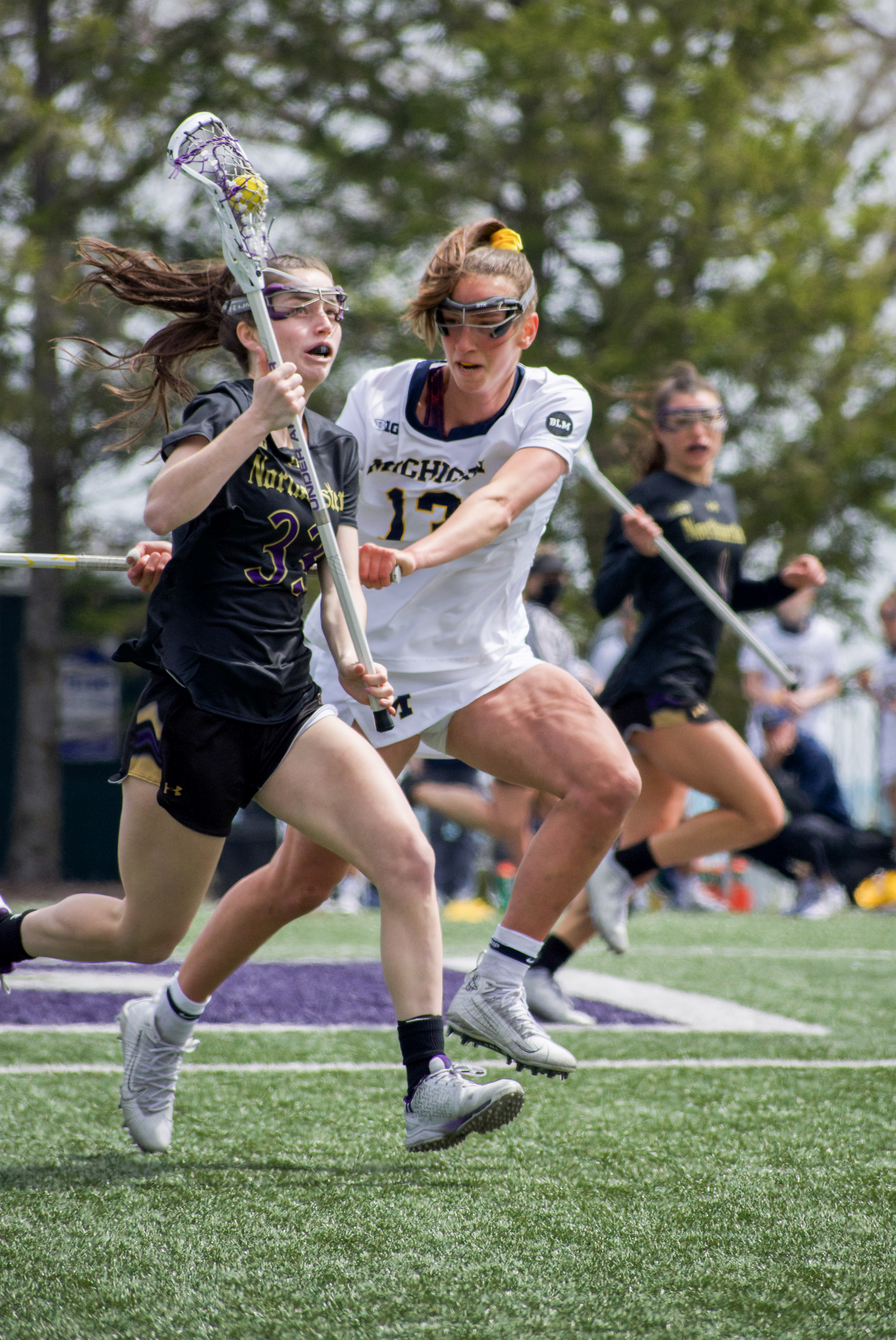
Often on the wings are graduates Sammy Mueller and Lindsey McKone, who have been critical to Northwestern’s offensive plans, posting 41 and 32 points respectively. After winning the draw, Mueller and McKone will help the ’Cats push up into the offensive zone and establish a scheme, whether it’s a key pass or a nice screen across the crease to pull off the score.
Sammy Mueller Goals 🤝 Poetry in Motion@NULax back in action this afternoon to take on No. 7/5 Penn State (2 p.m. CT)#GoCats | #LakeShow pic.twitter.com/daPyPlYR6A
— Northwestern Athletics (@NU_Sports) March 13, 2021
Behind the midfield is the defense, which isn’t fantastic this year but gets the job done when necessary. Northwestern’s defense has a clear percentage of 0.876, meaning that when the defense gets the ball, they are able to transition it to the offense 87.6% of the time. This core is led by senior Ally Palermo, who has started all 11 games for Northwestern this year, and senior Carson Copeland, who’s started seven.
The key issue for Northwestern, as implied by the 12.4% of clears lost, is turnovers. Northwestern has the second-highest number of turnovers per game in the Big Ten with 14.36, allowing opponents a key opportunity to jump and return to their offense and perhaps come all the way back. Although this hasn’t been an issue during the regular season, as Northwestern faces tougher and tougher opponents, they will need to get disciplined and make good passes.
The backstop of the group is junior goalkeeper Madison Doucette, who has started all 11 games in goal for the ’Cats. Posting a 0.420 save percentage — good for fourth in the Big Ten — Doucette is a decent stopgap who can handle her fair share of shots. Doucette’s efforts, along with the aforementioned dominance in the offensive zone, have allowed her to post a 10.26 goals-against average, first in the Big Ten but just 24th in the NCAA.
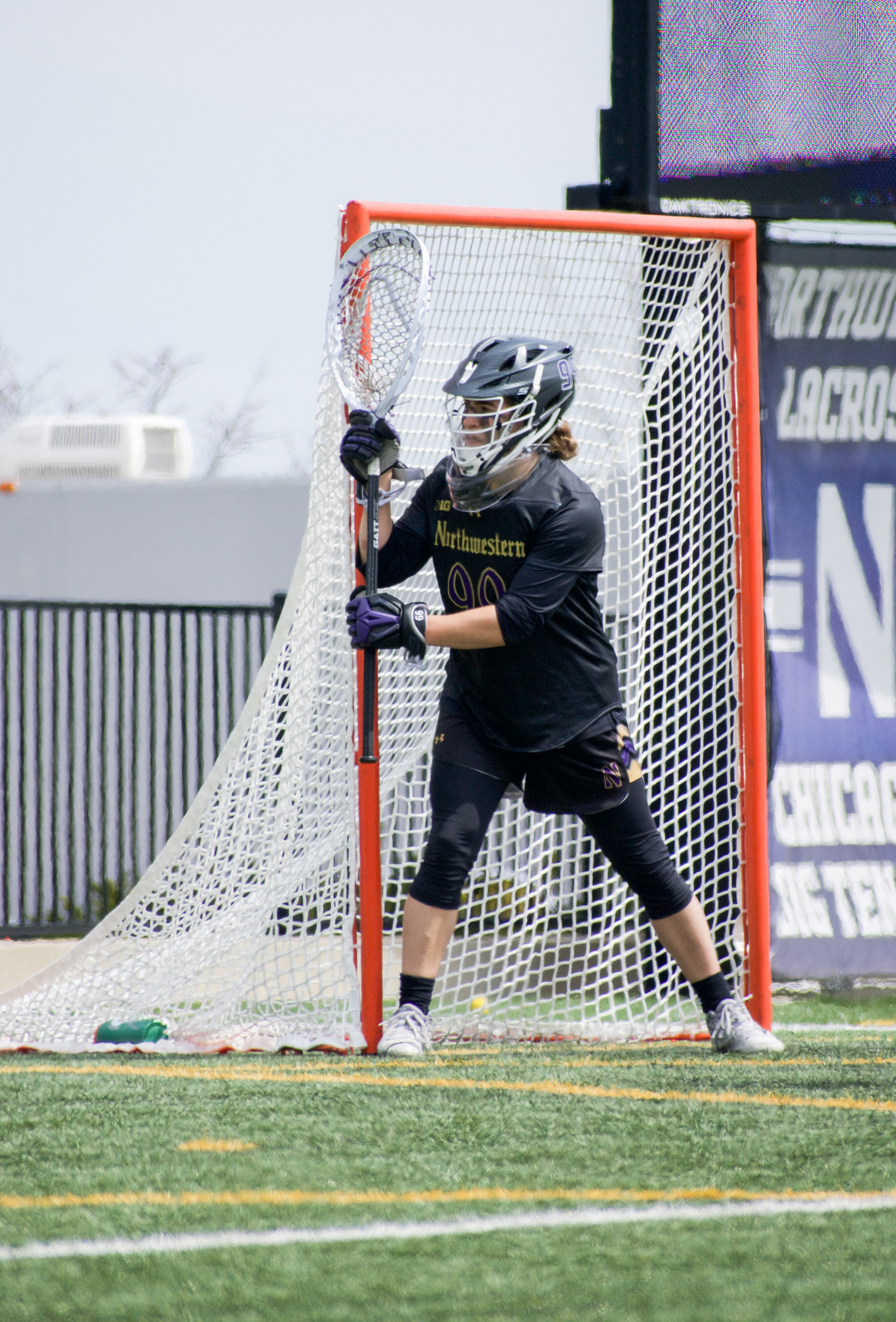
Overall, Northwestern is a team that relies more on the flash of the offense and setting up in their opponent’s zone, and it’s honestly not a bad way to win games. As always, however, the phrase goes “offense sells tickets, defense wins championships.” Is that the case for this team?
Overrated?
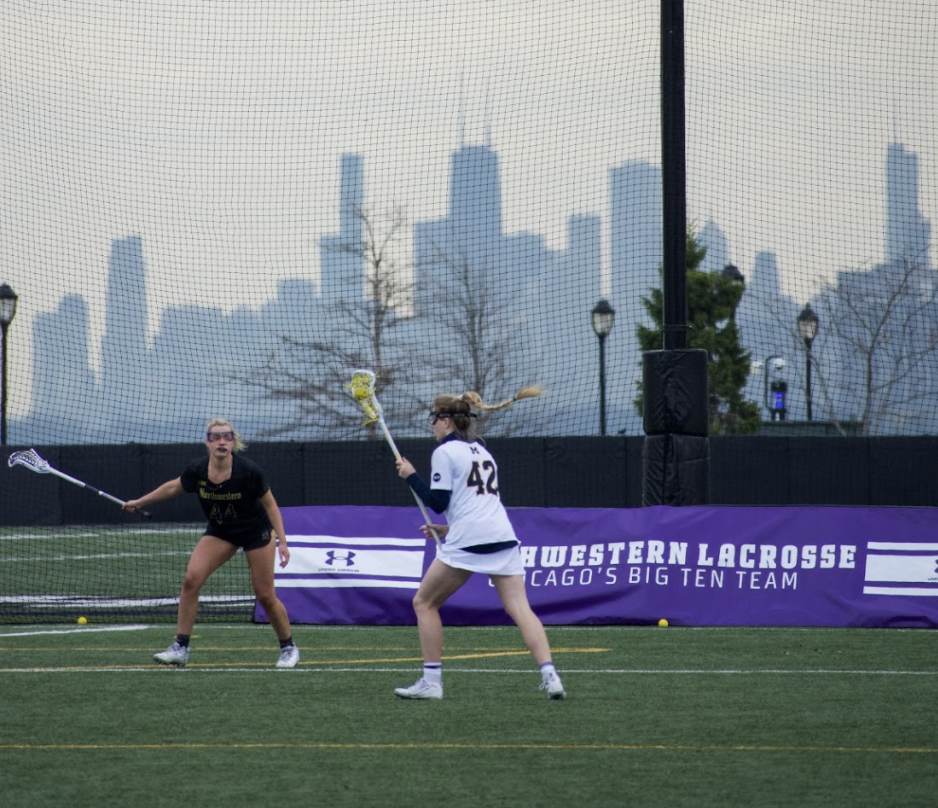
After clinching the regular season title, Northwestern will play their first game in the Big Ten Tournament this Friday, having earned a bid to the semifinal. Following their work there, they will likely be invited to the NCAA Tournament, earning their 17th consecutive bid.
Despite being named Big Ten Champion and having a perfect season in the making, Northwestern is not turning many heads on the NCAA level. In the latest ranking, Northwestern sits at just eighth in the latest poll, behind teams like North Carolina (15-0 ACC), Syracuse (12-2 ACC) and Notre Dame (8-5 ACC). While Northwestern is certainly not a perfect team, their low ranking may be nothing more than the result of an “East Coast” bias,” as the ’Cats remain the only team from outside the Eastern Time Zone to win the National Championship.
Northwestern women's lacrosse team was so dominant that literally every other #B1G school finished with a negative goal differential. pic.twitter.com/SFZ0smS60M
— /r/CollegeBasketball (@redditCBB) April 29, 2021
So how do the ’Cats match up? Northwestern is currently the only team from the Big Ten to sit in the top 40 teams in the NCAA, meaning they will face their toughest opponents in the NCAA tournament. While there is not a lot to work with in terms of recent opponents, Northwestern’s most recent games against these contenders do not give confident vibes: in 2020, the ’Cats dropped home matchups to North Carolina (20-18, March 9), Syracuse (16-11, February 22) and Notre Dame (17-15, Feb 14).
Essentially, despite a fantastic Big Ten season and an NCAA-leading offense, Northwestern’s toughest work lies ahead of them. Regardless of the final outcome, there’s no doubt that all eyes in Evanston will be glued to their tv sets when the ’Cats hit the tournament.
Let’s turn the clocks back to 2012.
